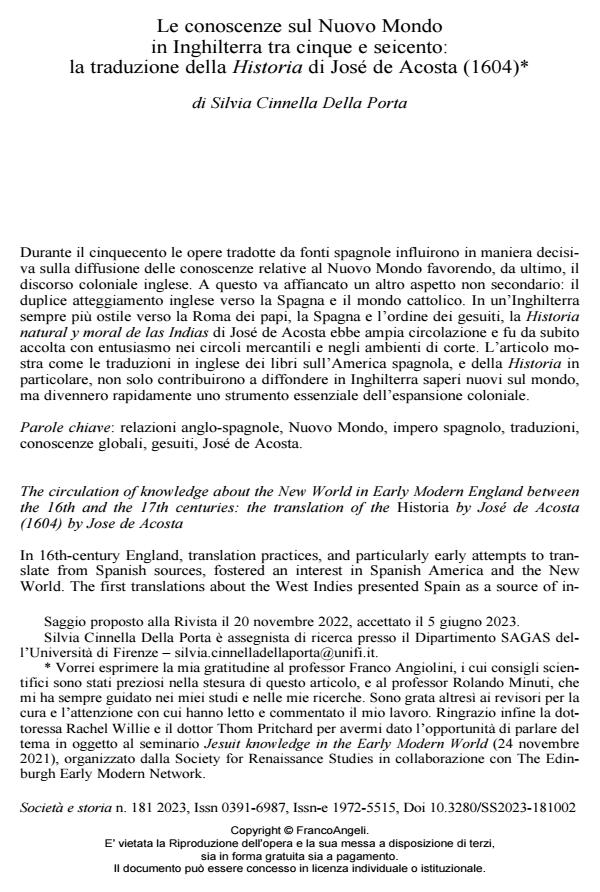Le conoscenze sul Nuovo Mondo in Inghilterra tra cinque e seicento: la traduzione della Historia di José de Acosta (1604)
Titolo Rivista SOCIETÀ E STORIA
Autori/Curatori Silvia Cinnella Della Porta
Anno di pubblicazione 2023 Fascicolo 2023/181
Lingua Italiano Numero pagine 31 P. 427-457 Dimensione file 271 KB
DOI 10.3280/SS2023-181002
Il DOI è il codice a barre della proprietà intellettuale: per saperne di più
clicca qui
Qui sotto puoi vedere in anteprima la prima pagina di questo articolo.
Se questo articolo ti interessa, lo puoi acquistare (e scaricare in formato pdf) seguendo le facili indicazioni per acquistare il download credit. Acquista Download Credits per scaricare questo Articolo in formato PDF

FrancoAngeli è membro della Publishers International Linking Association, Inc (PILA)associazione indipendente e non profit per facilitare (attraverso i servizi tecnologici implementati da CrossRef.org) l’accesso degli studiosi ai contenuti digitali nelle pubblicazioni professionali e scientifiche
Durante il cinquecento le opere tradotte da fonti spagnole influirono in maniera decisi- va sulla diffusione delle conoscenze relative al Nuovo Mondo favorendo, da ultimo, il discorso coloniale inglese. A questo va affiancato un altro aspetto non secondario: il duplice atteggiamento inglese verso la Spagna e il mondo cattolico. In un’Inghilterra sempre più ostile verso la Roma dei papi, la Spagna e l’ordine dei gesuiti, la Historia natural y moral de las Indias di José de Acosta ebbe ampia circolazione e fu da subito accolta con entusiasmo nei circoli mercantili e negli ambienti di corte. L’articolo mo- stra come le traduzioni in inglese dei libri sull’America spagnola, e della Historia in particolare, non solo contribuirono a diffondere in Inghilterra saperi nuovi sul mondo, ma divennero rapidamente uno strumento essenziale dell’espansione coloniale.
Parole chiave:relazioni anglo-spagnole, Nuovo Mondo, impero spagnolo, traduzioni, conoscenze globali, gesuiti, José de Acosta.
Silvia Cinnella Della Porta, Le conoscenze sul Nuovo Mondo in Inghilterra tra cinque e seicento: la traduzione della Historia di José de Acosta (1604) in "SOCIETÀ E STORIA " 181/2023, pp 427-457, DOI: 10.3280/SS2023-181002